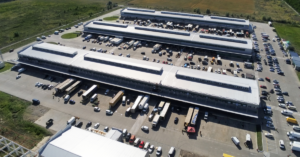The vastness of Texas is astonishing. At more than 268,000 square miles, it is the second-largest state by area, trailing only Alaska. Driving from El Paso on the western edge of the state to Beaumont on the eastern border via Interstate 10 is an 11-hour, 830-mile journey.
Although there still are many wide-open spaces in the Lone Star State, population growth has exploded in recent years and isn’t expected to slow down anytime soon. The U.S. Census Bureau reported that Texas added about 850,000 residents from 2010 to 2019, or 15.3% growth.
 At 29 million people, it is the second most-populous state and the Texas Demographic Center projects a population of 47.4 million by 2050, or 88.3% growth from 2010. Much of that expansion is expected to occur in the major metro areas of Austin, Dallas-Fort Worth, Houston and San Antonio. Twenty-seven Texas counties are estimated to double their populations from 2010 to 2050.
At 29 million people, it is the second most-populous state and the Texas Demographic Center projects a population of 47.4 million by 2050, or 88.3% growth from 2010. Much of that expansion is expected to occur in the major metro areas of Austin, Dallas-Fort Worth, Houston and San Antonio. Twenty-seven Texas counties are estimated to double their populations from 2010 to 2050.
The Lone Star State’s economy has bounced back relatively well since the start of the coronavirus pandemic. Although the unemployment rate spiked at 13.5% this past April, it had dropped to 6.8% by August, significantly lower than the U.S. rate of 8.4%. Labor statistics show that Texas had filled 13.4 million jobs in August 2020, roughly on par with pre-pandemic employment levels.
Certain industries were struggling, however. A report this past August in The Texas Tribune noted that an estimated 30% of the state’s restaurants will either close or significantly change their business models. The food-service industry was projected to take another six to 18 months to fully recover, and that was expected to have trickle-down effects on the agricultural, trucking and food-processing sectors.
The oil and gas industries are major economic drivers in Texas and they were severely hurt by a post-pandemic decline in demand. The Houston Chronicle reported that these industries were expected to bottom out this fall with the fewest number of workers they’ve had since 2005. Demand for jet fuel has waned with the stagnation in air travel and passenger traffic at Houston’s two major airports was down 75% year over year this past July.
A second-quarter 2020 report from the Texas A&M University Real Estate Center showed positive signs for commercial real estate activity, although the report cautioned that the pace of ongoing recovery is largely dependent on containing the COVID-19 crisis. In general, capitalization rates for office, retail and industrial properties in the state’s major metro areas rose during the first six months of this year, indicating increased risk for investors. ●
Dallas-Fort Worth Office Market
 According to a second-quarter 2020 report from Cushman & Wakefield, asking rents for the Dallas-Fort Worth office market declined by 1.6% annually to $26.25 per square foot while the vacancy rate rose to 19.6%, an increase of 100 basis points from the prior quarter. Although the overall office market experienced negative net absorption for a second consecutive quarter, there were significant leases signed by T-Mobile, LSG Sky Chefs and a Walgreens subsidiary, among others.
According to a second-quarter 2020 report from Cushman & Wakefield, asking rents for the Dallas-Fort Worth office market declined by 1.6% annually to $26.25 per square foot while the vacancy rate rose to 19.6%, an increase of 100 basis points from the prior quarter. Although the overall office market experienced negative net absorption for a second consecutive quarter, there were significant leases signed by T-Mobile, LSG Sky Chefs and a Walgreens subsidiary, among others.
Cushman & Wakefield noted that 4.7 million square feet of new office space was set to be delivered in the next two years and much of that space was expected to be preleased as tenants continue to relocate from older, lower-quality properties. The report also noted that the Dallas-Fort Worth metro area lost more than 272,000 jobs from second-quarter 2019 to second-quarter 2020. Nineteen percent of these jobs were office-using positions in professional and business services, information and technology, and financial services.
Focus: Education
As one of the most-populous states, Texas also has one of the largest public education systems in the nation. According to data from the Texas Education Agency, the state had more than 5.4 million students enrolled in its K-12 public schools during the 2018-2019 school year. They were served by roughly 721,000 teachers, administrators and support staff. Additionally, there were nearly 1.6 million students enrolled in the state’s public and private colleges and universities as of fall 2019.
According to U.S. News & World Report, however, Texas had the nation’s 34th-best education system last year. The ranking was derived from graduation rates, standardized test scores, college debt and tuition costs, among other things. Across the state’s K-12 schools, the key impediments to improvement are low teacher pay and a systemwide lack of funding, according to a February 2019 survey from The Texas Politics Project. Last year, state legislators passed House Bill 3, an $11.6 billion package designed to increase public education spending while lowering property taxes.
What the locals say
“With COVID-19, what we saw was a huge uptick in the rental market for single-family (homes), just because people that were either on the fence about buying a home, or got locked down in a one-bedroom or two-bedroom apartment, it kind of pushed them into thinking it’s time for us to get into a home. If we go into lockdown again, I’d rather do it in a three-bedroom home with a backyard and a grill. … We have three- or five-year types of rental loan products that just exploded. We’re seeing a huge uptick in people wanting those rental loans and people wanting to buy houses as investments.”

Will Dyer
Chief investment officer, Bay Mountain Capital
3 Cities to Watch
Austin

The Texas capital grew by 22% from 2010 to 2019, and now includes about 979,000 residents. The Greater Austin area has dozens of companies that individually employ at least 500 people, including Apple, Samsung, Charles Schwab and General Motors. BAE Systems, a major aerospace and defense contractor, announced this past August that it intends to build a 390,000-square-foot facility in North Austin, which will employ 1,400 people upon completion in 2022.
Houston

More than three years after Hurricane Harvey devastated Houston, recovery efforts are continuing. Houston Public Media reported this past June that less than 1% of the 9,000 homeowners invited to apply for a city-administered assistance program had been reimbursed for repairs. The coronavirus outbreak and oil bust earlier this year further damaged the city’s commercial real estate market. In second-quarter 2020, the metro-area office-market vacancy rate soared to 21.4%, CBRE reported.
Midland

This West Texas city of 146,000 in the heart of the oil-rich Permian Basin saw its fortunes plummet in the wake of COVID-19. The number of active oil and gas rigs in the region dropped from 441 to 117 between August 2019 and August 2020. Still, WalletHub ranked Midland No. 14 on its 2019 list of the nation’s fastest-growing cities, as measured by multiple economic, employment and demographic metrics. Midland County had a median household income of $78,888 as of 2018.
Sources: Austin Business Journal; Austin Chamber of Commerce; Britannica.com; CBRE; Cushman & Wakefield; Houston Chronicle; Houston Public Media; Kallanish Energy; Texas A&M University Real Estate Center; Texas Demographic Center; Texas Education Agency; Texas State Historical Association; The Texas Politics Project; The Texas Tribune; U.S. Bureau of Economic Analysis; U.S. Bureau of Labor Statistics; U.S. Census Bureau; U.S. News & World Report; WalletHub







